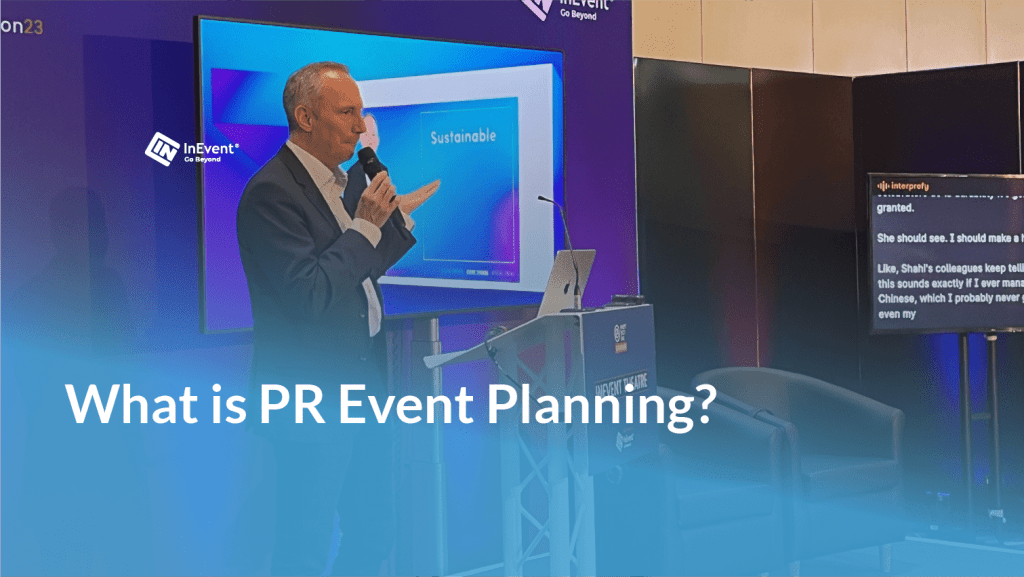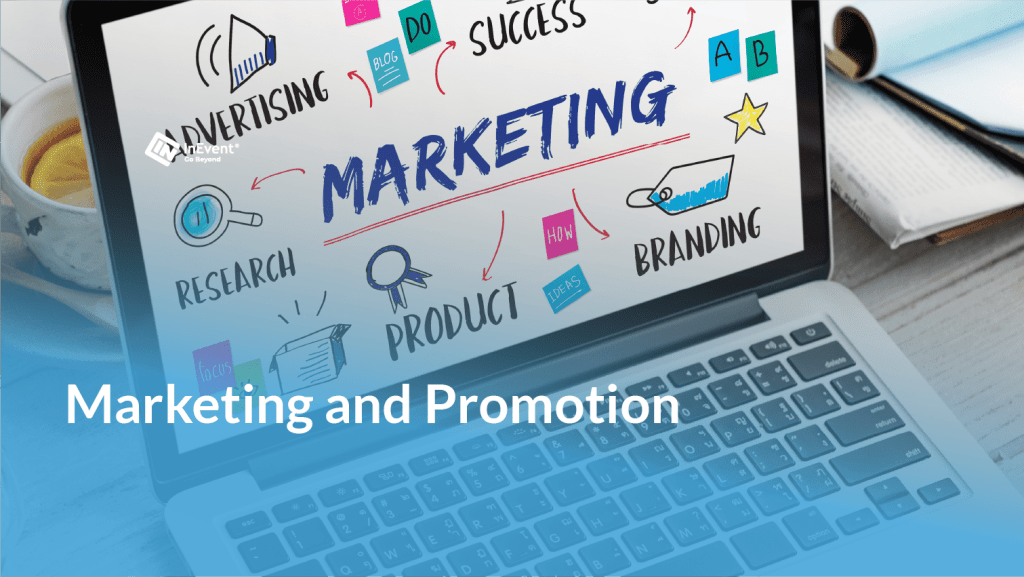Your Guide to a successful PR Event Planning
In the dynamic world of public relations, events play a pivotal role in shaping brand narratives and forging lasting connections with audiences. Whether it’s launching a groundbreaking product, celebrating a company milestone, or hosting a press conference, the right PR event can catapult your brand into the limelight. But what sets a successful event apart in this competitive landscape?
We’re going to walk you through every step you need to think about, from deciding what your event is all about, to making sure everything runs smoothly on the day. Think of this as your personal checklist for creating an event that not only gets people talking about your brand but also leaves them with a great impression.
What is PR Event Planning?

PR event planning is all about creating special events that help a brand stand out, introduce new products, or build better connections with the media and public. It’s a key part of public relations, focused on making events that leave a great impression and spread the brand’s message. It’s strategic, focusing on:
Brand Storytelling: Conveying a compelling brand narrative.
Media Engagement: Attracting attention from journalists and influencers.
Audience Interaction: Offering interactive and immersive experiences.
Strategic Timing: Aligning with key launches or milestones.
Measurable Outcomes: Assessing success through impact and engagement.
Understanding the Purpose of Your PR Event
Planning a PR event starts with a clear goal. What do you want to achieve? Maybe you’re launching a new product, celebrating a big milestone, or just want more people to know about your brand. Here’s how you can define your event’s purpose and make sure it hits the mark:
1. Defining Your Event’s Objective
Set a Clear Goal: Think about what you want to achieve. Is it more sales, media coverage, or building a stronger community? It can also be just a corporate event planning so write down your main goal. This will be your north star for every decision you make about the event.
Know Your Audience: Who do you want to impress? Maybe it’s industry leaders, potential customers, or the media. Understand their interests and what they expect. This way, you can plan an event that they’ll not only attend but also enjoy and remember.
2. Types of PR Events
Choose the Right Type: Each event type serves a different purpose. For example:
Product Launches: Perfect for showcasing a new product. Focus on what’s unique and why it matters.
Press Conferences: Great for making big announcements. Keep it informative and newsworthy.
Networking Events: Ideal for building relationships. Make it interactive and engaging.
Award Ceremonies: Good for celebrating achievements and creating buzz.
Match the Event to Your Goal: Once you know what you want to achieve, pick the event type that aligns best with your goal. For example, if you want to generate buzz, a product launch or a press conference might be your best bet.
Planning: The Foundation of Success
Planning is what turns your PR event ideas into reality. It’s all about getting the details right. Here’s how you can lay a solid foundation for your event:
Create a Timeline: Start by setting a date for your event. Then work backwards to today, listing all the big tasks you need to do, like booking a venue, sending invites, and setting up the event space. Remember to give yourself enough time for each task.
Task List: Break down everything into smaller tasks. Need to book a venue? That includes researching options, visiting sites, and confirming the booking. This makes the whole process less overwhelming and keeps you on track. Check-out Planning Checklist.
Communication is Key: Regular team meetings and a shared planning document can keep everyone informed and aligned.
Build Relationships: Good relationships with suppliers, like caterers and equipment rentals, can make a big difference.
Budgeting for Your Event
Managing your budget well is key to a successful PR event. Here’s how to do it without missing a beat:
Create a Detailed Budget: List all possible expenses—venue, food, marketing, decorations, and any unexpected costs. Keep track of everything to avoid surprises. Get your Event Budget Template.
Prioritize Spending: Decide what’s most important. Is it the venue, the food, or the entertainment? Put your money where it will make the biggest impact.
Look for Savings: Compare prices, ask for discounts, and think creatively to cut costs without sacrificing quality.
Keep a Buffer: Always have a little extra set aside for unexpected expenses.
By staying on top of your budget, you can make sure your event is memorable for all the right reasons.
Marketing and Promotion

Getting the word out about your PR event is crucial. Event Marketing is essential to personalize the message. Here’s a concise plan for effective marketing and promotion:
Identify Your Key Messages: What are the main points you want to communicate? Keep your messages clear and consistent across all platforms.
Utilize Social Media: Create event pages, use hashtags, and post regular updates to build excitement and awareness.
Leverage Email Marketing: Send invites and reminders to your email list. Make sure your emails are eye-catching and informative. Use AI integrations like ChatGPT to write professional emails.
Engage with Media: Reach out to local newspapers, magazines, and bloggers who might be interested in covering your event.
Technology and Tools for Event Success
In today’s digital age, technology plays a crucial role in making your PR event a success. Here’s how to leverage it effectively:
Event Management Software: Use software for tasks like registration, ticketing, and attendee tracking. It streamlines processes and keeps data organized.
Social Media Integration: Use tools that integrate with social media to promote your event and engage with attendees before, during, and after the event.
Live Streaming Options: Consider live streaming your event to reach a wider audience. Platforms like Facebook Live, YouTube, or specialized streaming services can be useful.
Feedback and Analytics Tools: After the event, use online surveys and analytics tools to gather feedback and measure your event’s success.
By incorporating these technologies, you can enhance the efficiency and reach of your PR event, creating a more impactful and memorable experience.
On the Day: Execution and Management
The day of the event is where all your planning comes to life. Here’s how to ensure everything runs smoothly:
Early Setup: Arrive early to set up and address any last-minute adjustments. Ensure all technical equipment is working and the venue is arranged as planned.
Team Briefing: Have a quick meeting with your team to go over the day’s schedule, responsibilities, and any important information. Clear communication is key.
Guest Management: Welcome guests warmly and provide clear guidance or signage for event proceedings. If there’s registration, ensure it’s efficient to avoid long queues.
Troubleshooting: Be prepared to handle unexpected issues. Whether it’s a technical glitch or a late speaker, having a calm, problem-solving approach is crucial.
Engage with Attendees: Throughout the event, interact with guests, gather feedback, and ensure they are having a good experience.
By keeping these points in mind and staying adaptable, you can manage your PR event effectively, leaving a positive impression on your attendees.
Post-Event: Analysis and Follow-Up
After the event, it’s important to wrap things up properly and learn from the experience. Here’s what to focus on:
Gather Feedback: Send out surveys to attendees to get their thoughts on the event. What did they enjoy? What could be improved? This feedback is gold for planning future events.
Review Your Objectives: Look back at your initial goals. Did you achieve what you set out to do? Analyze attendance, engagement, media coverage, and any other metrics you set.
Thank Your Attendees and Team: Send thank you notes or emails to everyone who attended and to your team. Acknowledging their participation and hard work goes a long way.
Share Highlights: Post photos, videos, and key takeaways from the event on your website and social media. This keeps the conversation going and raises your brand’s profile even after the event.
Debrief with Your Team: Discuss what worked well and what didn’t. This is a valuable learning experience for everyone involved.
By effectively handling the post-event phase, you not only maximize the impact of the event but also set a strong foundation for the success of future events. Download your Post Event Report.
Conclusion:
Bringing a PR event to life is no small feat. It requires careful planning, precise execution, and thoughtful follow-up. From defining clear objectives to engaging with your audience and analyzing the event’s success, each step plays a vital role in the overall impact of your event.
Remember, a successful PR event is more than just a one-time occasion; it’s an opportunity to strengthen your brand, build meaningful relationships, and leave a lasting impression. The hard work and dedication you put into planning and managing your event can lead to tangible results – increased brand awareness, stronger customer relationships, and even media attention.



